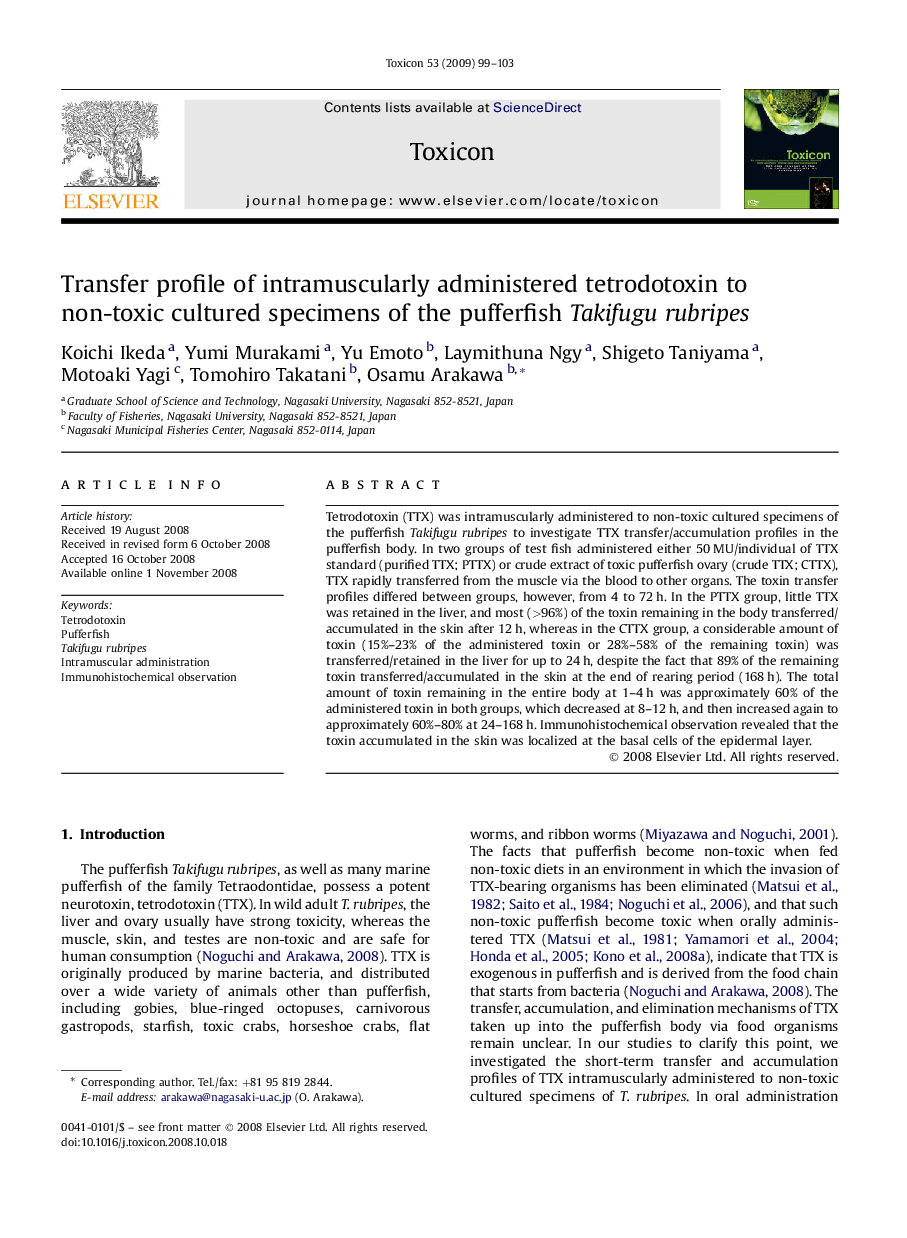| Article ID | Journal | Published Year | Pages | File Type |
|---|---|---|---|---|
| 2066498 | Toxicon | 2009 | 5 Pages |
Tetrodotoxin (TTX) was intramuscularly administered to non-toxic cultured specimens of the pufferfish Takifugu rubripes to investigate TTX transfer/accumulation profiles in the pufferfish body. In two groups of test fish administered either 50 MU/individual of TTX standard (purified TTX; PTTX) or crude extract of toxic pufferfish ovary (crude TTX; CTTX), TTX rapidly transferred from the muscle via the blood to other organs. The toxin transfer profiles differed between groups, however, from 4 to 72 h. In the PTTX group, little TTX was retained in the liver, and most (>96%) of the toxin remaining in the body transferred/accumulated in the skin after 12 h, whereas in the CTTX group, a considerable amount of toxin (15%–23% of the administered toxin or 28%–58% of the remaining toxin) was transferred/retained in the liver for up to 24 h, despite the fact that 89% of the remaining toxin transferred/accumulated in the skin at the end of rearing period (168 h). The total amount of toxin remaining in the entire body at 1–4 h was approximately 60% of the administered toxin in both groups, which decreased at 8–12 h, and then increased again to approximately 60%–80% at 24–168 h. Immunohistochemical observation revealed that the toxin accumulated in the skin was localized at the basal cells of the epidermal layer.
